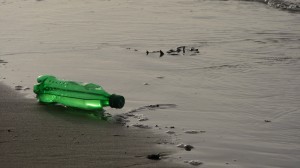
More evidence that low-calorie sweeteners are bad for your health
Studies show that artificial sweeteners can raise the risk of hypertension, metabolic syndrome, type 2 diabetes and heart disease, including stroke.

You can’t see them or smell them or even taste them, but the pharmaceutical pollutants in our environment are there – and they are a risk to health.
Drug products have been in our environment for years, whether they derive from domestic wastewater, hospitals, industry or agriculture. Now a Tel Aviv University researcher says that current testing for these dangerous contaminants isn’t going far enough.
“If, using currently available tests, we don’t find certain pharmaceutical pollutants in the environment,we assume they are not there”, explains Dr Dror Avisar, head of the Hydro-Chemistry Laboratory at Tel Aviv University’s Department of Geography and the Human Environment.
“But we may be looking for the wrong compounds. This is because through biological or chemical processes such as sun exposure or oxidisation, drugs break down, or degrade, into different forms – and could still be lurking in our water or soil.”
Dr Avisar is now doing extensive testing to determine how drugs degrade and identify the many forms they take in the environment. He has published his findings in Environmental Chemistry and the Journal of Environmental Science and Health.
Drug products have been in our environment for years, whether they derive from domestic wastewater, hospitals, industry or agriculture. But those who are searching for these drugs in the environment are typically looking for known compounds – parent drugs – such as antibiotics, pain killers, lipid controllers, anti-psychotic medications and many more.
Not only do environmental scientists need to identify the degraded products, but they must also understand the biological-chemical processes that produce them in natural environments. When they degrade, compounds form new chemicals the effects of which we really don’t understand.
“It’s important to talk about the new chemicals in our environment, derived from parent drugs. They are part of the mixture,” Dr Avisar warns. “Chemicals do not simply disappear – we must understand what they’ve turned into. We are dealing with a whole new range of contaminants.”

Please subscribe me to your newsletter mailing list. I have read the
privacy statement